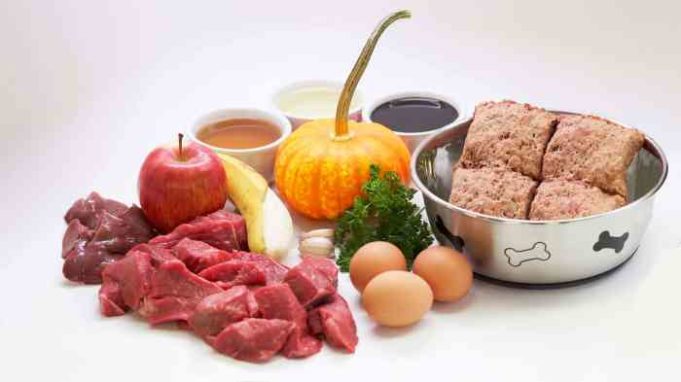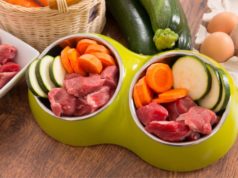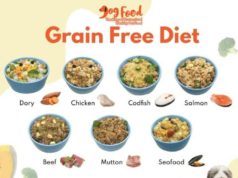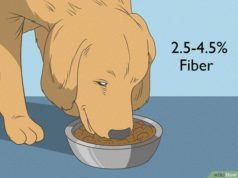Is a raw diet good for dogs? This question has become increasingly popular among pet owners seeking natural and healthy alternatives to commercially prepared dog food. A raw diet, often referred to as BARF (Biologically Appropriate Raw Food), consists of uncooked meat, bones, organs, and sometimes fruits and vegetables. Proponents of raw feeding argue that it aligns more closely with a dog’s ancestral diet, promoting optimal health and well-being.
This article delves into the benefits, risks, and practical considerations of feeding a raw diet to your canine companion. We’ll explore the nutritional aspects, safety concerns, and transition strategies, providing a comprehensive overview to help you make informed decisions about your dog’s diet.
What is a Raw Diet?
A raw diet for dogs, as the name suggests, involves feeding them uncooked, unprocessed animal-based ingredients. This approach aims to mimic the natural diet of wolves, their ancestors, emphasizing whole foods and avoiding artificial additives.
Types of Raw Diets
Different types of raw diets exist, each with its own approach to ingredient selection and preparation.
- BARF (Biologically Appropriate Raw Food): This popular method focuses on a balanced mix of meat, bones, organs, and vegetables. It often includes supplements to ensure complete nutrition.
- Prey-Model Raw: This diet attempts to mimic the natural prey of wolves, emphasizing whole animal carcasses. It includes muscle meat, bones, organs, and even fur and feathers.
- Commercial Raw Diets: Pre-made raw food options are available from various manufacturers. These often come in frozen or dehydrated forms, offering convenience and a degree of portion control.
Benefits of Raw Diets
Proponents of raw diets claim numerous benefits for dogs, including:
- Improved Digestion: Raw food is believed to be more easily digestible than processed kibble, potentially leading to better nutrient absorption and reduced digestive issues.
- Nutritional Advantages: Raw diets often contain higher levels of naturally occurring vitamins, minerals, and enzymes compared to processed kibble, potentially providing a more complete nutritional profile.
- Enhanced Coat and Energy Levels: Anecdotal evidence suggests that raw diets can contribute to a healthier coat and increased energy levels in dogs. This may be due to the higher levels of essential fatty acids and nutrients found in raw food.
Nutritional Considerations
A raw diet for dogs aims to provide the essential nutrients they need in a natural, unprocessed form. This means focusing on whole, fresh ingredients that closely resemble what a dog would eat in the wild. However, it’s crucial to ensure that a raw diet meets all the dog’s nutritional needs, as deficiencies can lead to health problems.
Nutrient Content of Raw Diets
A well-formulated raw diet can provide a balanced range of nutrients for dogs, including:
* Protein: Essential for muscle growth and repair, hormone production, and immune function. Raw meat, poultry, and fish are excellent sources of protein.
* Fat: Provides energy, helps absorb vitamins, and supports healthy skin and coat. Raw meat, poultry, and fish also contain healthy fats like omega-3 and omega-6 fatty acids.
* Carbohydrates: Provide energy and fiber, which is essential for digestion. Vegetables, fruits, and some grains can be included in a raw diet to provide carbohydrates.
* Vitamins and Minerals: Raw food contains a wide array of vitamins and minerals, including vitamin A, vitamin D, vitamin E, vitamin K, calcium, phosphorus, magnesium, and potassium.
* Other Nutrients: Raw diets can also provide enzymes, probiotics, and other beneficial nutrients that may be absent in processed food.
Comparison with Commercially Prepared Dog Food
Commercially prepared dog food is often formulated to meet the minimum nutritional requirements set by AAFCO (Association of American Feed Control Officials). While these foods can provide essential nutrients, they may not be as bioavailable as those found in raw food. This means that the body may not be able to absorb and utilize all the nutrients as efficiently.
Raw food proponents argue that raw diets are more natural and provide a wider range of nutrients in a more bioavailable form. However, it’s important to note that there is no scientific consensus on whether raw diets are superior to commercially prepared dog food.
Nutritional Composition of Raw Food Ingredients
The following table provides a general overview of the nutritional composition of various raw food ingredients commonly used in dog diets:
| Ingredient | Protein (%) | Fat (%) | Carbohydrates (%) | Vitamins & Minerals |
|—|—|—|—|—|
| Beef | 20-25 | 10-15 | 0-5 | Rich in iron, zinc, and B vitamins |
| Chicken | 20-25 | 10-15 | 0-5 | Rich in niacin, vitamin B6, and selenium |
| Turkey | 20-25 | 10-15 | 0-5 | Rich in niacin, vitamin B6, and selenium |
| Fish | 15-20 | 5-10 | 0-5 | Rich in omega-3 fatty acids, vitamin D, and iodine |
| Eggs | 12-15 | 10-12 | 0-1 | Rich in protein, vitamin B12, and choline |
| Liver | 20-25 | 5-10 | 0-5 | Rich in iron, vitamin A, and vitamin B12 |
| Bone | 10-15 | 5-10 | 0-5 | Rich in calcium, phosphorus, and magnesium |
| Vegetables | 2-5 | 0-2 | 5-10 | Rich in fiber, vitamins, and minerals |
| Fruits | 1-5 | 0-2 | 10-20 | Rich in antioxidants, vitamins, and minerals |
Note: The exact nutritional composition of raw food ingredients can vary depending on the source, breed, and quality. It’s essential to choose high-quality, fresh ingredients from reputable suppliers.
Safety Concerns: Is A Raw Diet Good For Dogs
While a raw diet can offer potential benefits for dogs, it’s essential to be aware of the safety concerns associated with it. Raw food can harbor harmful bacteria, and improper handling can lead to contamination. Additionally, bone splinters and nutritional deficiencies are potential risks that require careful attention.
Bacterial Contamination
Raw meat, poultry, and fish can contain harmful bacteria such as Salmonella, E. coli, and Listeria. These bacteria can cause food poisoning in both dogs and humans. The risk of bacterial contamination is higher with raw food than with commercially prepared kibble, which undergoes heat treatment to kill bacteria.
Bone Splinters
Feeding raw bones can be risky due to the potential for bone splinters. These splinters can cause choking, intestinal blockage, and even internal injuries. While some advocate for feeding cooked bones, even these can be dangerous as they become brittle and can splinter easily.
Nutritional Deficiencies, Is a raw diet good for dogs
A raw diet requires careful planning and monitoring to ensure that your dog receives all the essential nutrients. Without proper supplementation, dogs on a raw diet may be deficient in vitamins, minerals, and other nutrients.
Proper Food Handling and Storage
To minimize the risks associated with raw feeding, it’s crucial to follow strict food handling and storage guidelines.
- Wash your hands thoroughly with soap and water after handling raw food.
- Store raw food in the refrigerator at 40°F (4°C) or below.
- Thaw frozen raw food in the refrigerator, not at room temperature.
- Avoid cross-contamination by using separate cutting boards and utensils for raw food and cooked food.
- Wash all bowls and utensils used for raw food in hot, soapy water.
Potential Health Risks and Preventative Measures
| Health Risk | Preventative Measures |
|---|---|
| Bacterial Contamination |
|
| Bone Splinters |
|
| Nutritional Deficiencies |
|
Transitioning to a Raw Diet
Switching your dog to a raw diet requires careful planning and gradual implementation. It’s crucial to introduce the new food slowly and monitor your dog’s response closely. This ensures a smooth transition and minimizes any potential digestive upset.
Gradual Introduction and Monitoring
Introducing raw food gradually is essential to avoid digestive issues. Start by mixing a small amount of raw food with your dog’s current food, gradually increasing the proportion of raw food over several days or weeks. This allows your dog’s digestive system to adapt to the new diet.
- Start with a small amount of raw food, around 10% of their daily food intake, and mix it with their current food.
- Gradually increase the percentage of raw food over a week or two, aiming to reach 100% raw food within a few weeks.
- Monitor your dog for any signs of digestive upset, such as diarrhea, vomiting, or gas. If you notice any adverse reactions, reduce the amount of raw food or return to their previous diet.
- Consult your veterinarian if you experience any concerns.
Calculating Raw Food Intake
The amount of raw food your dog needs depends on their age, weight, and activity level. You can use a raw food calculator or consult with a veterinarian to determine the appropriate daily intake.
The general rule of thumb is to feed 2-3% of your dog’s body weight in raw food daily. For example, a 20-pound dog would need 0.4-0.6 pounds of raw food per day.
Importance of Veterinary Consultation
Before making any significant changes to your dog’s diet, it’s essential to consult with your veterinarian. They can assess your dog’s individual needs and provide personalized recommendations.
- Your veterinarian can help determine the appropriate raw food diet for your dog’s specific health condition and lifestyle.
- They can also advise on the correct balance of nutrients, including protein, fat, and minerals.
- Consulting your veterinarian ensures that your dog receives the necessary nutrients and avoids any potential health issues.
Cost and Convenience
A raw diet for dogs can be more expensive and time-consuming compared to commercially prepared food. It’s important to weigh these factors against the potential health benefits before making a decision.
The cost of a raw diet can vary depending on the quality and source of ingredients, as well as the size and activity level of your dog. You may find that a raw diet is more expensive than commercially prepared food, especially if you choose to purchase pre-made raw meals. However, some people find that they can save money by preparing their own raw food from scratch, using ingredients like meat, bones, and vegetables.
Cost Comparison
The cost of a raw diet can be compared to commercially prepared dog food by considering the following factors:
- Ingredient Quality: Raw diets often use higher-quality ingredients, such as human-grade meat and organic produce. These ingredients can be more expensive than the ingredients used in commercially prepared food.
- Preparation Time: Preparing a raw diet from scratch requires time and effort, which can be considered a hidden cost.
- Storage and Handling: Raw food needs to be stored properly to prevent spoilage. This can involve purchasing specialized equipment, such as a freezer, which can add to the overall cost.
Time Commitment
A raw diet requires a significant time commitment. Preparing raw food from scratch can be time-consuming, especially if you have multiple dogs or a large breed. You will need to:
- Source and purchase ingredients: This may involve visiting multiple stores or ordering online.
- Prepare the food: This includes grinding meat, chopping vegetables, and mixing ingredients.
- Store and handle the food: Raw food needs to be stored properly to prevent spoilage.
- Feed your dog: You will need to feed your dog multiple meals per day, depending on their age and activity level.
Logistical Challenges
Storing and handling raw food presents logistical challenges.
- Space Requirements: Raw food needs to be stored in a freezer or refrigerator to prevent spoilage. This can be a challenge for people with limited storage space.
- Potential for Spoilage: Raw food can spoil quickly if not stored properly. This means you need to be careful about how you handle and store the food to ensure it remains safe for your dog to eat.
- Hygiene and Safety: Raw food can contain bacteria that can be harmful to both humans and dogs. It’s important to practice good hygiene when handling raw food, such as washing your hands thoroughly and disinfecting surfaces.
Alternatives to Raw Diets
While raw diets offer potential benefits, they are not the only option for providing your dog with a healthy and balanced diet. Several alternative diets can meet your dog’s nutritional needs, offering varying levels of convenience and cost.
Commercially Prepared Dog Food
Commercially prepared dog food is a widely available and convenient option. These foods are formulated to meet the nutritional requirements of dogs of different ages, breeds, and activity levels.
Pros
- Convenience: Commercially prepared dog food is readily available in various forms, including kibble, canned food, and freeze-dried options, making it easy to store and serve.
- Balanced Nutrition: Reputable brands invest in research and development to ensure their formulas meet AAFCO (Association of American Feed Control Officials) standards for complete and balanced nutrition.
- Cost-Effective: Compared to raw food, commercially prepared dog food is generally more affordable, especially for larger breeds or multi-dog households.
- Safety: Commercially prepared dog food undergoes rigorous safety protocols to minimize the risk of bacterial contamination or nutritional deficiencies.
Cons
- Ingredients: Some commercially prepared dog food brands may contain fillers, artificial colors, flavors, and preservatives, which some pet owners may prefer to avoid.
- Quality Variation: The quality and nutritional value of commercially prepared dog food can vary significantly between brands. It is essential to choose reputable brands with high-quality ingredients.
Home-Cooked Meals
Home-cooked meals offer a greater level of control over the ingredients and nutritional content of your dog’s diet. However, it requires more time, effort, and knowledge of canine nutrition.
Pros
- Ingredient Control: You can choose fresh, high-quality ingredients and avoid additives or preservatives found in commercially prepared food.
- Tailored Nutrition: You can customize your dog’s meals to address specific dietary needs or allergies.
- Potentially More Nutritious: Some pet owners believe home-cooked meals can be more nutritious than commercially prepared food, especially when using high-quality ingredients and following a balanced recipe.
Cons
- Time Commitment: Preparing home-cooked meals requires significant time and effort, including meal planning, shopping, and cooking.
- Nutritional Adequacy: It’s crucial to consult with a veterinarian or certified canine nutritionist to ensure your recipes meet your dog’s nutritional requirements. Incorrectly balanced home-cooked meals can lead to deficiencies or imbalances.
- Safety: Proper handling and cooking are essential to prevent bacterial contamination. Raw ingredients require careful preparation and storage to ensure safety.
Cooked Food with Supplements
This option involves feeding cooked food, such as rice, chicken, or vegetables, supplemented with commercially available dog food supplements to ensure complete and balanced nutrition.
Pros
- Control over Ingredients: You can choose fresh, whole ingredients for the cooked portion of the diet while relying on supplements for essential nutrients.
- Easier Than Raw: Cooking food is generally easier than preparing a raw diet, requiring less time and effort.
Cons
- Nutritional Adequacy: It can be challenging to ensure the supplements you choose provide all the necessary nutrients in the correct proportions. Consulting a veterinarian or canine nutritionist is essential.
- Cost: While cooked food itself may be less expensive than raw food, supplements can add to the overall cost of this option.
Comparison Table
| Diet Type | Cost | Convenience | Nutritional Adequacy |
|---|---|---|---|
| Commercially Prepared Dog Food | Moderate | High | Good to Excellent (depending on brand) |
| Home-Cooked Meals | High (depending on ingredients) | Low | Good to Excellent (with proper planning and consultation) |
| Cooked Food with Supplements | Moderate to High | Moderate | Good (with proper supplement selection) |
Last Point
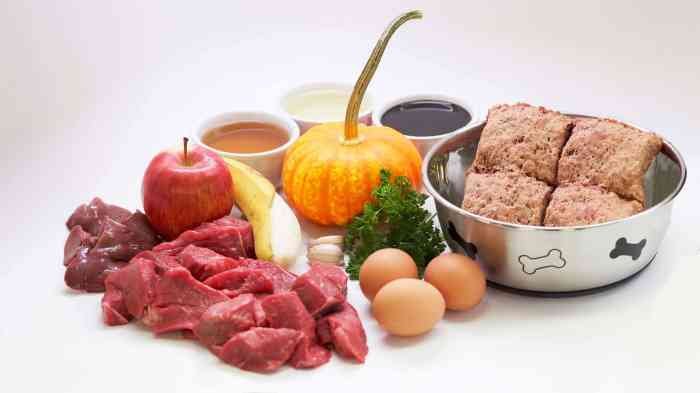
Ultimately, the decision to feed a raw diet is a personal one, requiring careful consideration of your dog’s individual needs, your lifestyle, and your willingness to manage the associated challenges. While a raw diet can offer potential benefits, it’s essential to weigh these against the risks and ensure you can provide a safe and nutritionally balanced feeding plan. Consult with your veterinarian to determine if a raw diet is suitable for your dog and to receive personalized guidance on transitioning and maintaining a healthy diet.
Question Bank
What are the main benefits of a raw diet for dogs?
Proponents of raw feeding claim benefits like improved digestion, healthier skin and coat, increased energy levels, and potentially reduced allergies. However, these claims need further scientific validation.
Is it safe to feed bones to dogs on a raw diet?
While bones can provide calcium and other nutrients, they pose choking and splintering risks. Choose appropriate bone sizes and supervise your dog during feeding. Consult your vet for guidance on safe bone choices.
How do I ensure a raw diet meets my dog’s nutritional needs?
It’s crucial to provide a balanced raw diet with the correct proportions of meat, bones, organs, and supplements. Consult with a veterinarian or a certified animal nutritionist for personalized recommendations.
Whether a raw diet is good for dogs is a question with a lot of different answers. It’s important to do your research and talk to your vet before making any major changes to your dog’s diet. If you’re looking for a diet to help you lose weight, the best diet to lose weight for diabetics is often recommended.
Just like with your dog, finding the right diet for you is a personal decision. It’s important to make sure your dog is getting all the nutrients they need, just like you should make sure you’re getting the nutrients you need.
Deciding whether a raw diet is right for your dog is a big decision. You’ll need to consider their individual needs and make sure they’re getting all the necessary nutrients. Just like you might consider whether is diet coke caffeine free before enjoying a can, you’ll want to do your research before making any major changes to your dog’s diet.
Ultimately, consulting with a veterinarian is always the best way to determine what’s best for your furry friend.
While a raw diet can provide many benefits for dogs, it’s crucial to ensure they’re getting all the essential nutrients, including iodine. You can learn more about how to get iodine in your diet here , and this information can help you tailor your dog’s raw diet to meet their needs.
Iodine is vital for thyroid function, which plays a crucial role in your dog’s overall health and well-being.















